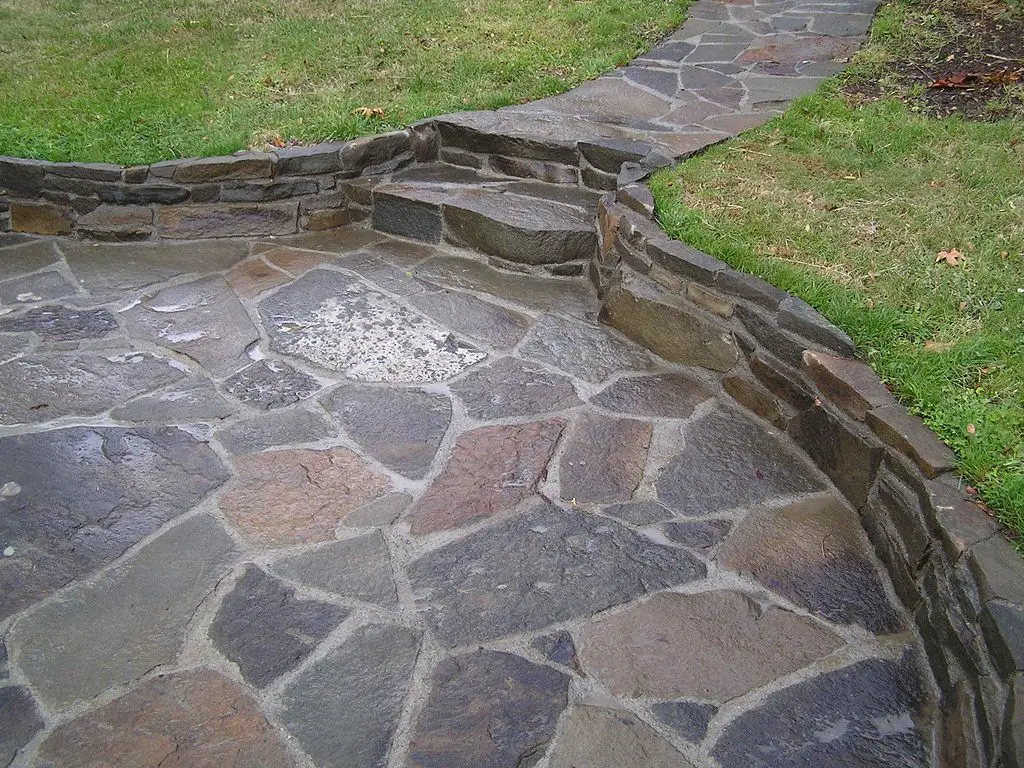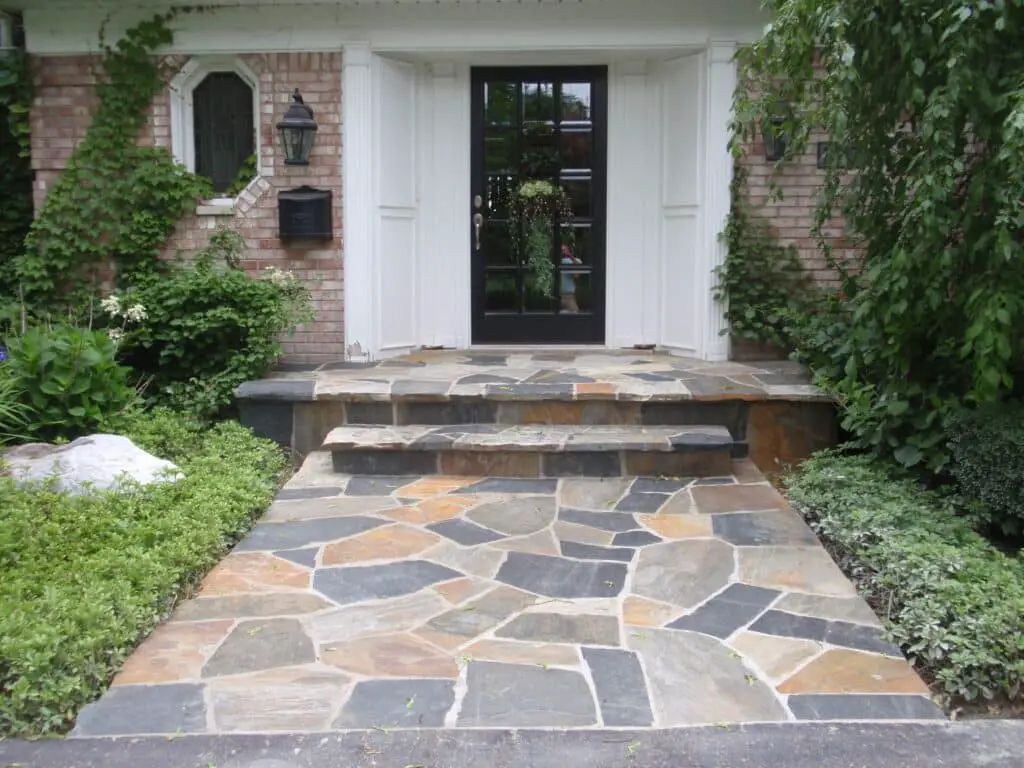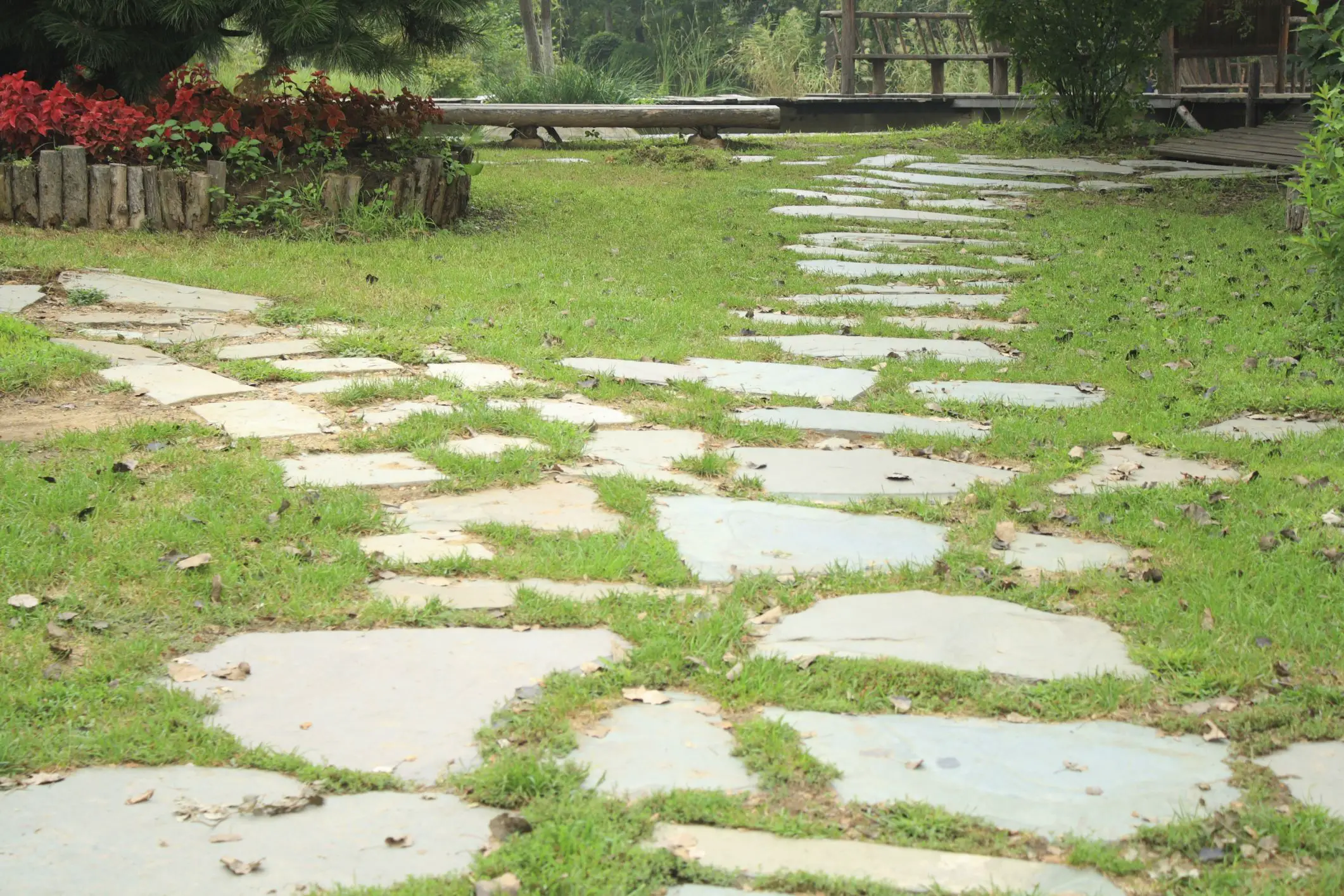How To Fill Gaps In Flagstone Patio
Introduction
How To Fill Gaps In Flagstone Patio: Flagstone patios are a popular choice for outdoor spaces due to their natural beauty and durability. However, over time, gaps may start to form between the stones, detracting from the overall appearance and potentially causing tripping hazards. If you have noticed gaps in your flagstone patio, don’t worry! There are several effective methods for filling these gaps and restoring the patio to its original condition.
One common method for filling gaps in a flagstone patio doors is to use polymeric sand. Polymeric sand is a mixture of sand and special polymers that, when activated with water, hardens and creates a solid bond between the stones. This not only fills the gaps but also helps to prevent weed growth and insect infestation. To use polymeric sand, simply sweep it into the gaps between the stones, making sure to fill them completely. Then, mist the patio with water to activate the polymers and allow the sand to harden. Once the sand has hardened, it will provide a long-lasting solution for filling the gaps in your flagstone patio.
Another option for filling gaps in a flagstone patio is to use mortar. Mortar is a mixture of cement, sand, and water that hardens to create a strong and durable bond. To fill gaps with mortar, first, remove any loose or crumbling mortar from the patio using a chisel or scraper. Then, mix the mortar according to the manufacturer’s instructions and apply it to the gaps using a trowel. Make sure to press the mortar firmly into the gaps and smooth it out with the trowel. Allow the mortar to dry completely before walking on the patio. While mortar provides a strong and long-lasting solution, it may require more maintenance over time compared to other methods.

What is the best gap filler for flagstone?
Therefore, choose a gap filler that improves the flagstone’s appearance and gives stability and longevity.
Polymeric sand fills flagstone gaps well. Polymeric sand, a blend of fine sand and polymer additives, bonds flagstone pavers when activated with water. Since it hardens and locks pavers, this gap filler prevents weeds and erosion. You can also choose the right color of polymeric sand for your flagstone.
Crushed stone or gravel is another typical flagstone gap filler. This gap filler gives flagstone a natural, rustic look, making it ideal for naturalistic outdoor environments. Crushed stone or gravel can be simply placed into gaps and compacted for stability. Since stones and gravel shift over time, this gap filler may need occasional repair.
How do you fill cracks in flagstone patio?
Flagstone patios are a popular choice for outdoor spaces due to their natural beauty and durability. However, over time, cracks may develop in the flagstone, detracting from its appearance and potentially causing tripping hazards. Fortunately, filling cracks in a flagstone patio is a relatively simple process that can be done by homeowners with basic DIY skills.
Firstly, it is important to clean the patio thoroughly before attempting to fill the cracks. This can be done by sweeping away any loose debris and using a pressure washer to remove dirt and grime. It is also a good idea to use a mild detergent to remove any stubborn stains. Once the patio is clean and dry, it is ready for crack repair.
Next, the cracks in the flagstone patio need to be assessed to determine their size and depth. Small, hairline cracks can often be filled with a simple crack filler or caulk. These products are readily available at most home improvement stores and can be applied using a caulk gun. It is important to choose a filler or caulk that is specifically designed for outdoor use and is compatible with the type of flagstone used in the patio.
If the cracks are larger or more extensive, a more involved repair process may be necessary. In these cases, it may be necessary to remove the damaged flagstone and replace it with a new piece. This can be done by carefully prying up the damaged stone using a pry bar and then fitting a new piece into the empty space. It is important to ensure that the new stone is level with the surrounding flagstone and securely in place.
What is best way to fill in gaps on patio?
There are various ways to fix patio gaps for a seamless, appealing finish. Whether you have minor cracks or wider gaps, choose the best approach for your needs and patio condition.
Sand or gravel are commonly used to cover patio gaps. Many homeowners choose this strategy because it’s simple and affordable. Pour filler material into the gaps and spread it evenly with a broom or brush. After filling the holes, crush the filler material with a tamper or wood to create a solid, flat surface.
If your patio has wider gaps or cracks, consider utilizing concrete or cement for durability. Mix concrete or mortar according to the manufacturer’s recommendations and pour it into fissures. A trowel or float will smooth and uniformly finish the surface. Concrete and mortar take longer to install than filler materials, but they are stronger and more lasting.
What is the best rock for in between flagstone?
When it comes to choosing the best rock for in between flagstone, there are several factors to consider. The right rock can enhance the overall look of your flagstone patio or walkway, while also providing stability and durability. It’s important to choose a rock that will not only fill the gaps between the flagstones but also complement the color and texture of the stones themselves.
One popular option for filling the gaps between flagstones is decomposed granite. This type of rock is made up of small particles that compact together tightly, creating a stable surface. Decomposed granite is available in a variety of colors, including shades of brown, gray, and gold, allowing you to choose the one that best matches your flagstones. It also provides a natural, rustic look that complements the organic feel of flagstone.
Another option to consider is pea gravel. This type of rock is made up of small, rounded stones that are smooth to walk on. Pea gravel comes in a range of colors, including shades of gray, brown, and white. It provides a softer, more casual look compared to decomposed granite and can add a touch of elegance to your flagstone patio or walkway.
If you’re looking for a more formal and polished look, consider using crushed limestone. This type of rock is made up of larger pieces that are crushed down to create a more uniform size. Crushed limestone is available in various shades of gray and can provide a clean, sophisticated look to your flagstone installation.
How do you fix cracks in flagstone?
Fixing cracks in flagstone can be a relatively simple process if you have the right tools and materials. Flagstone is a popular choice for outdoor patios and walkways due to its natural beauty and durability. However, over time, cracks can develop in the stone due to various factors such as weathering, settling of the ground, or heavy foot traffic. These cracks not only detract from the overall appearance of the flagstone but can also pose a tripping hazard. Therefore, it is important to address them promptly to prevent further damage and ensure the longevity of your flagstone.
Firstly, you will need to assess the severity of the cracks in your flagstone. Small, hairline cracks can often be repaired using a simple technique known as crack filling. This involves applying a specialized crack filler or epoxy resin to the crack and allowing it to dry. Once dry, the filler will help to seal the crack and prevent further spreading. It is important to choose a filler that is specifically designed for use on flagstone to ensure proper adhesion and compatibility.
If the cracks in your flagstone are larger or more extensive, you may need to consider a more involved repair method such as patching. Patching involves removing the damaged portion of the flagstone and replacing it with a new piece. This can be a more time-consuming and labor-intensive process, but it is necessary for more severe cracks that cannot be effectively repaired with crack filling alone. It is important to choose a replacement stone that matches the color and texture of the existing flagstone to maintain a cohesive appearance.
What materials can be used to fill gaps in a flagstone patio?
There are several materials that can be used to fill gaps in a flagstone patio. One common option is polymeric sand, which is a mixture of sand and special polymers that harden when exposed to moisture. This type of sand is easy to use and provides a durable and long-lasting solution for filling gaps. Another option is crushed stone or gravel, which can be poured into the gaps and compacted to create a solid surface. This is a more natural-looking option and can be a good choice for a rustic or informal patio.
In addition to these options, some homeowners choose to use mortar or concrete to fill gaps in their flagstone patio. This can provide a more permanent solution, but it is important to note that it may be more difficult to remove or replace if necessary. It is also important to choose a mortar or concrete mix that is specifically designed for outdoor use and can withstand the elements. Finally, some people opt to use a combination of materials, such as polymeric sand for smaller gaps and mortar for larger ones, to achieve the desired result.
Are there any specific techniques or tools required to fill gaps in a flagstone patio?
Yes, there are specific techniques and tools that can be used to fill gaps in a flagstone patio. One common technique is to use a mortar mix to fill the gaps between the flagstones. This involves mixing the mortar according to the manufacturer’s instructions and then using a trowel to carefully fill the gaps. It is important to make sure the mortar is evenly distributed and that it is pressed firmly into the gaps to ensure a strong bond.
Another technique that can be used is to use polymeric sand to fill the gaps. Polymeric sand is a mixture of sand and a special polymer that hardens when exposed to moisture. To use this technique, the polymeric sand is poured into the gaps and then swept into place using a broom. Once the sand is in place, it is important to wet it down with water to activate the polymer and allow it to harden.
How long does it typically take to fill gaps in a flagstone patio?
The time it takes to fill gaps in a flagstone patio can vary depending on the size of the patio and the extent of the gaps. Generally, it can take anywhere from a few hours to a full day to complete the task.
First, you will need to gather the necessary materials such as sand or polymeric sand, a broom, and a trowel. The first step is to clean the patio thoroughly, removing any debris or loose stones. Next, you will need to sweep sand into the gaps, ensuring that it fills the spaces completely. This can be a time-consuming process, especially if you have a large patio with numerous gaps.
Once the sand is in place, you will need to use a trowel to compact it and ensure that it is evenly distributed. This step may require some patience and precision to achieve the desired result. Finally, you will need to sweep away any excess sand and water the patio to help settle the sand into the gaps. Overall, the process of filling gaps in a flagstone patio can be completed in a relatively short amount of time, but it is important to take your time and ensure that the job is done properly to prevent future gaps from forming.Are there any maintenance tips to prevent future gaps from forming in a flagstone patio?
Yes, there are several maintenance tips that can help prevent future gaps from forming in a flagstone patio. One important tip is to regularly inspect the patio for any signs of gaps or loose stones. If you notice any gaps starting to form, it is important to address them as soon as possible to prevent them from getting larger.

Conclusion
When it comes to flagstone patios, it is not uncommon for gaps to form between the stones over time. These gaps can be unsightly and can also pose a tripping hazard. Fortunately, filling these gaps is a relatively simple process that can be done by homeowners with just a few basic tools and materials. In this article, we will discuss the steps involved in filling gaps in a flagstone patio.
The first step in filling gaps in a flagstone patio is to clean the area thoroughly. This can be done by sweeping away any loose dirt or debris with a broom. It is also a good idea to use a pressure washer to remove any stubborn stains or moss that may have accumulated between the stones. Once the area is clean, it is important to allow it to dry completely before proceeding to the next step.
Once the patio is clean and dry, the next step is to choose a suitable filler material. There are several options available, including sand, gravel, and polymeric sand. Sand is the most commonly used filler material for flagstone patios, as it is inexpensive and easy to work with. Gravel can also be used, but it may not provide as stable of a surface as sand. Polymeric sand is a newer option that is designed to harden when exposed to moisture, creating a more stable and durable surface.








